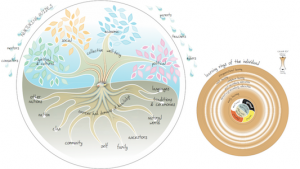This week we read Faye Ginsburg’s “Rethinking the Digital Age”. Within this article was a detailed description of a website called “US Mob“. The site appeared to be loaded with good material for my final project – I was immediately interested in finding out more about it’s interactive nature, how it represents Aboriginee culture in Australia, what affordances it presents to its audience, how it allows the user to move through it’s game-like interactivity and bring about increased knowledge of the indigenous peoples of Australia…
Alas, my hopes have been dashed.
This site, while still active, leads to many dead end links. In fact, I have clicked every single link on their homepage and none work. I get….”Oops! Google Chrome could not connect to www.usmob.com.au”
This experience is a powerful one when reflecting upon Ginsburg’s article. We often describe the internet as a place to represent knowledge and perhaps influence culture, yet, the sites which hold information can be removed without warning and poof! – knowledge, representation, revitalization efforts, are all gone.
It makes me wonder if this move to break all the links from this site was…
1. Purposeful? Was the site just not attracting enough attention?
2. Driven by corporate interests? Was funding pulled to maintain and improve upon the site?
3. Temporary? Is my experience due to maintenance on the site with all links to be re-established in a moment?
4. Software driven? Is my device too new? Too old? Not supportive of the media necessary to run the interactivites of the site?
This experience also makes me reflect on the idea of “permanence” on the internet. Some believe that what is posted online lasts forever. Perhaps this example is just one of many that what is posted online is subject to change just like the rest of our natural world.
In an effort to find the truth, I have emailed the contact reported on the site. I hope for news, but expect none – another pre-determined conclusion from past experiences of attempts to get in touch with “contacts” reported on websites….
Only to find my communication has been put into the proverbial “e-bottle” and cast out into the cyber-abyss.
Mel Burgess.

